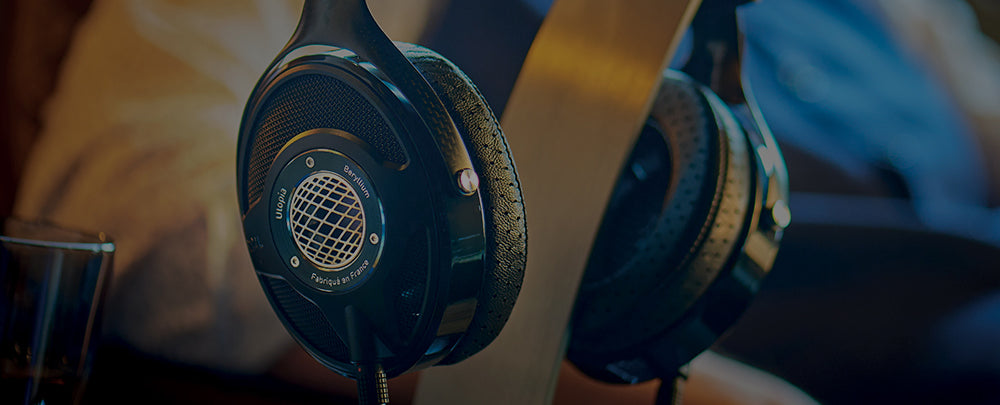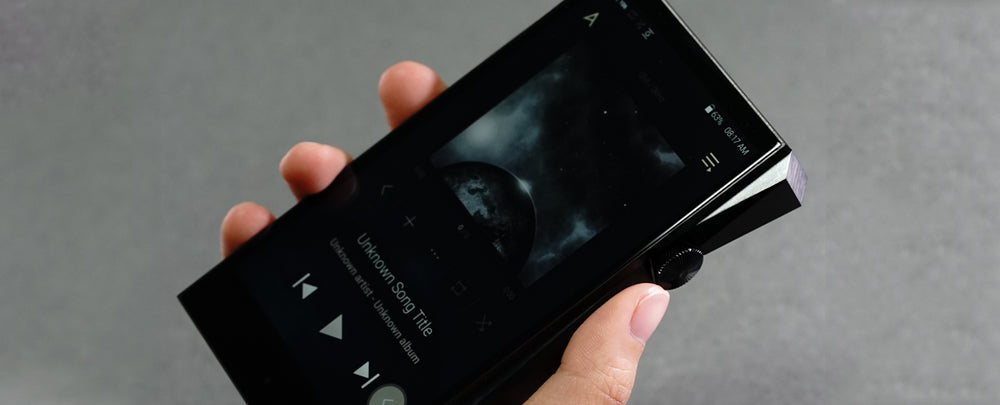While Merriam-Webster defines an audiophile as “a person who is enthusiastic about high-fidelity sound reproduction,” Audio46 defines it as “a general pain in the ass who is uncompromising about sound quality at the expense of everyone else’s sanity.” But we love them, and we cater to them, since we are audiophiles ourselves.
How to Become an Audiophile
Being an audiophile requires a little research. There is an unfathomable amount of playback equipment on the market. Each item has its draws and shortcomings, not to mention the factor of cost. The highest quality equipment can cost thousands of dollars, while other effective solutions can cost under a hundred.
Although there can be general agreement over the “skill” of a product, equipment quality is often subjective, and there is no singular consensus on what the ‘best’ products are. Beyond simple catalogue research or user reviews, many audiophiles prefer hands-on (and ears-on) testing of equipment before they make their purchasing decisions.
With respect to headphones, audiophiles are concerned with the following factors:
- The quality and character of the headphones themselves
- The resolution of the recording
- The quality of the digital to analogue converter
- The quality of the amplifier
Headphone Quality and Character

There are many elements that make for a audiophile headphone. In fact, there are countless terms that audiophiles use to describe sound. But at the risk of grossly generalizing all these elements, audiophiles base their headphone purchasing decisions on a couple of main factors: clarity, soundstage, and character.
Clarity and Soundstage
We’re using the word, “clarity” very broadly here, as there are many terms to describe sound quality, such as transparency, transient response, control, etc. But in general, how clearly can you hear the music? Does it sound clean? Does to sound realistic? Do you hear the all the details of the instrument’s texture and timbre? How good is the separation? Is there clear definition between instruments and their notes?
How big and multidimensional does the music sound? This what audiophiles are talking about when they refer to "soundstage." Are instruments spread out in terms of height, depth and width? Does the imaging of the instruments feel precise and colorful? These are just a few of examples of elements that combine to constitute an audiophile quality headphone.
Character
What is the character of the headphone? Is it a dark sound signature, where the lower frequencies are emphasized over the higher frequencies? Is it a bright headphone? Does it sound thin? Does it sound warm and lush? Is it fast? Tight?
Audiophiles take these factors and many other elements into account when choosing the style of headphone that suits their tastes. And this is why serious audiophiles tend to own more than one headphone; each headphone has its own personality. And depending on the mood or choice of music, audiophiles like to have different sound characteristics to choose from.
High Resolution Music
What is hi-res?
 Although there is no there is no universal standard for high resolution audio, hi-res music is generally defined as “lossless audio” that reproduces the full range of sound from the original studio or live master recording.
Although there is no there is no universal standard for high resolution audio, hi-res music is generally defined as “lossless audio” that reproduces the full range of sound from the original studio or live master recording.
Hi-res music files have a sampling rate and/or bit depth that equals or exceeds that of a CD, which is specified at 16-bit/44.1kHz.
As Verity Burns and Becky Roberts of whathifi.com state, the sampling rate “refers to the number of times samples of the signal are taken per second during the analogue-to-digital conversion process. The more bits there are, the more accurately the signal can be measured in the first instance, so going 16bit to 24bit can deliver a noticeable leap in quality. Hi-res audio files usually use a sampling frequency of 96kHz or 192kHz at 24bit. You can also have 88.2kHz and 176.4kHz files too.”
The problem, however, with high resolution files, is that generally, they tend to take up a lot of storage space. For this reason, audiophiles use a high storage capacity digital audio player (DAP) or other platform such as a computer to store and play hi-res files. There are other solutions as well, such as streaming services that provide hi-res music through a subscription. Tidal, for example, offers Master Quality Authenticated (MQA) files that you can stream without downloading.
Digital to Analogue Converters (DAC)

It’s not enough to have high resolution files. You need a digital to analogue converter (DAC) to translate the digital file into sound without losing audio quality. Let’s take your mobile device as an example. An iPhone can store a high resolution file if it has enough storage space. However, the DAC on the iPhone cannot support high resolution files. This is because the DAC on the iPhone discards a lot of the original “sound information” stored in the high resolution music file. It is a highly compressed version of the original, which has lost information in the process of the conversion. So, the sound is “lossy”.
For this reason, audiophiles who use their computers or mobile devices to play music will invest in an external DAC that can support the playback of a hi-res file. Higher priced digital audio players (DAPs) made by companies such as Astell&Kern already have high quality DACs integrated into the device. Like headphones, different DACs have their own respective sound characteristics that “color” the sound of the recording. And some DACs are more neutral in sound than others.
Amplifiers
Like DACs, amplifiers can have sound characteristics that “color” the sound. Some amplifiers are very neutral sounding, while others can brighten or warm up the sound profile. Tube amplifiers, for example, tend to make the sound warmer. And amps can even have an effect on the perceived size or spaciousness of the soundstage.
Some audiophile headphones require more power to drive than other headphones. So, part of the decision making process when choosing an amp would be based on the impedance and sensitivity of the headphone one intends to use.
DAC/AMP Combo

Many DACs and amplifiers are integrated. So, you only have to buy one device instead of a separate DAC connected to a stand alone amp.
If you are interested in further exploring the audiophile headphones and earbuds world, feel free to reach out to us online through our email or Live chat now. You can also call us at (212) 354-6424. Our sales engineers and technicians are happy to help you choose your first audiophile setup and/or discuss any questions you may have about headphones and headphone related products. Check out our related post "Top 5 Audiophile Mistakes" as well to learn more!


 FREE Shipping
FREE Shipping




